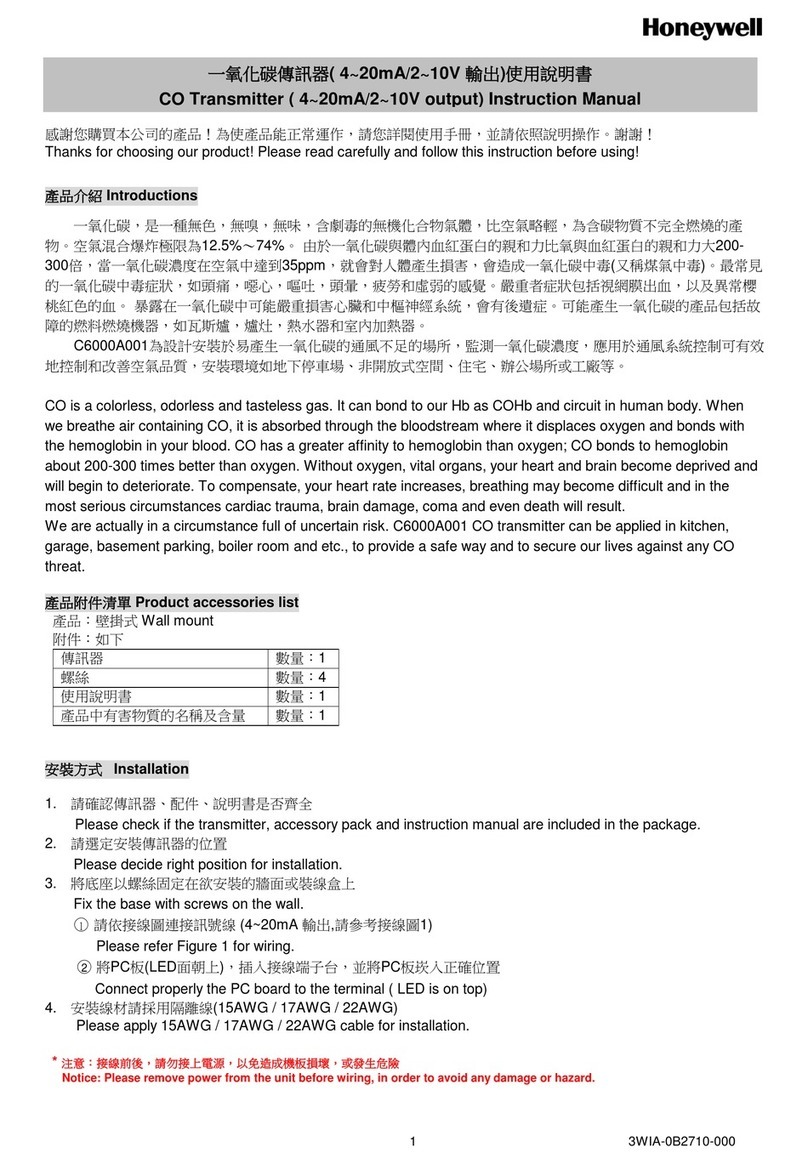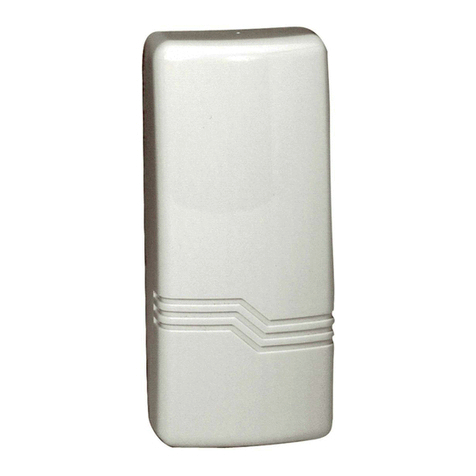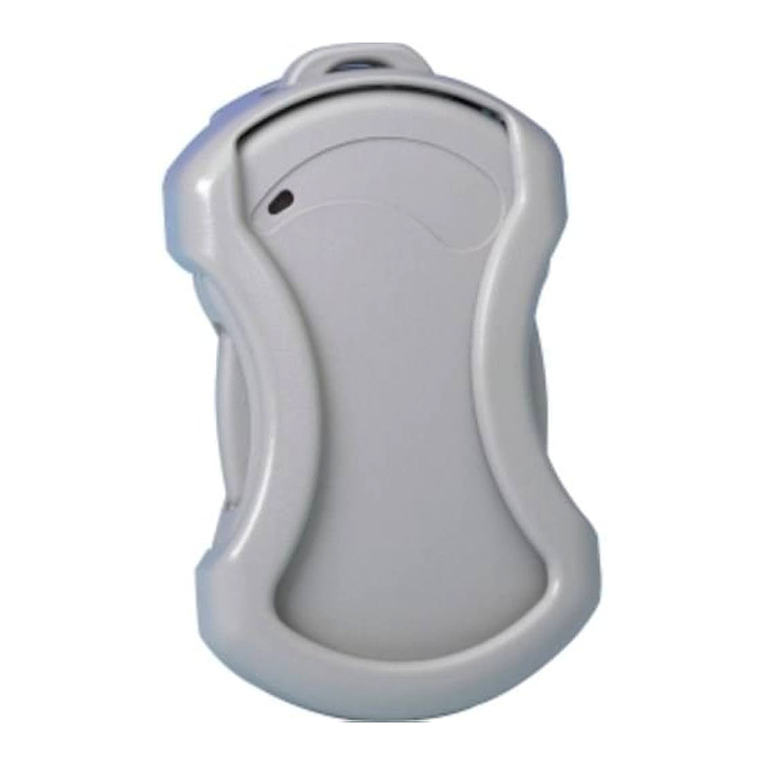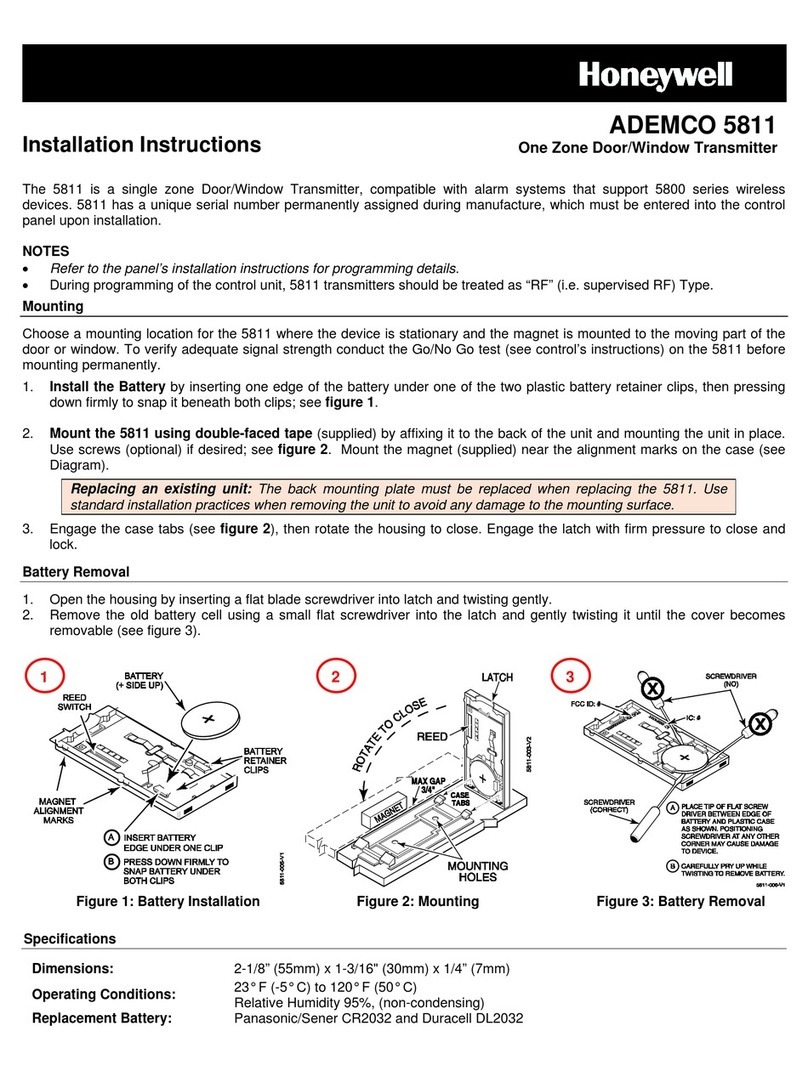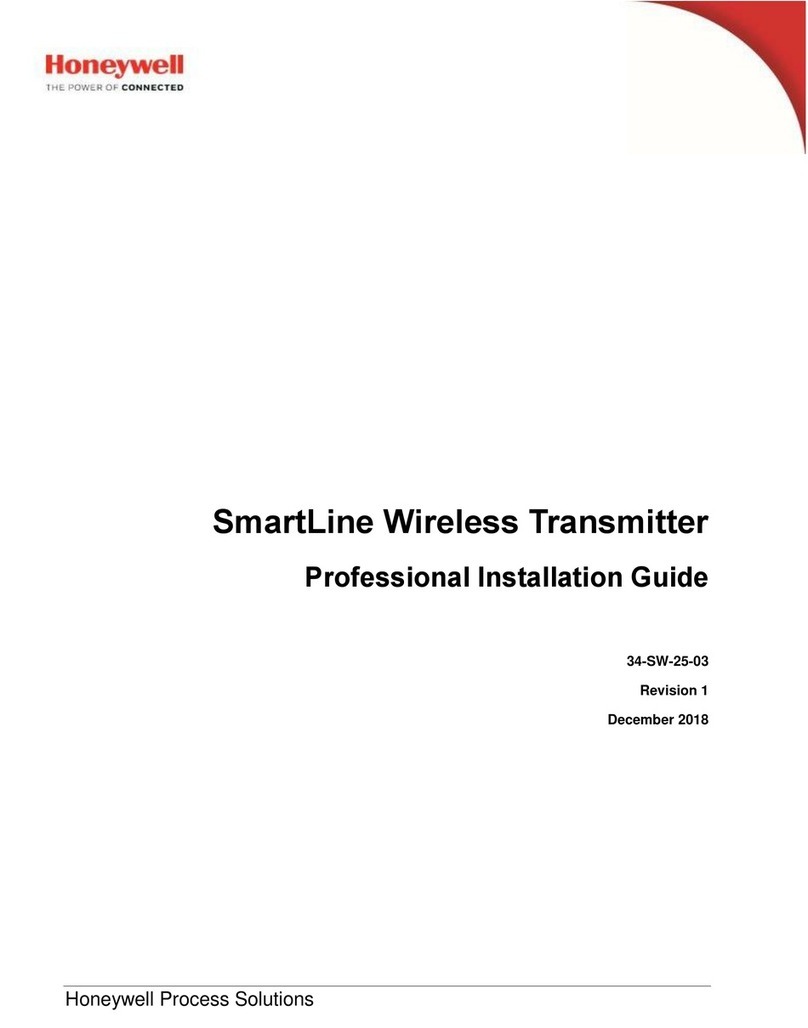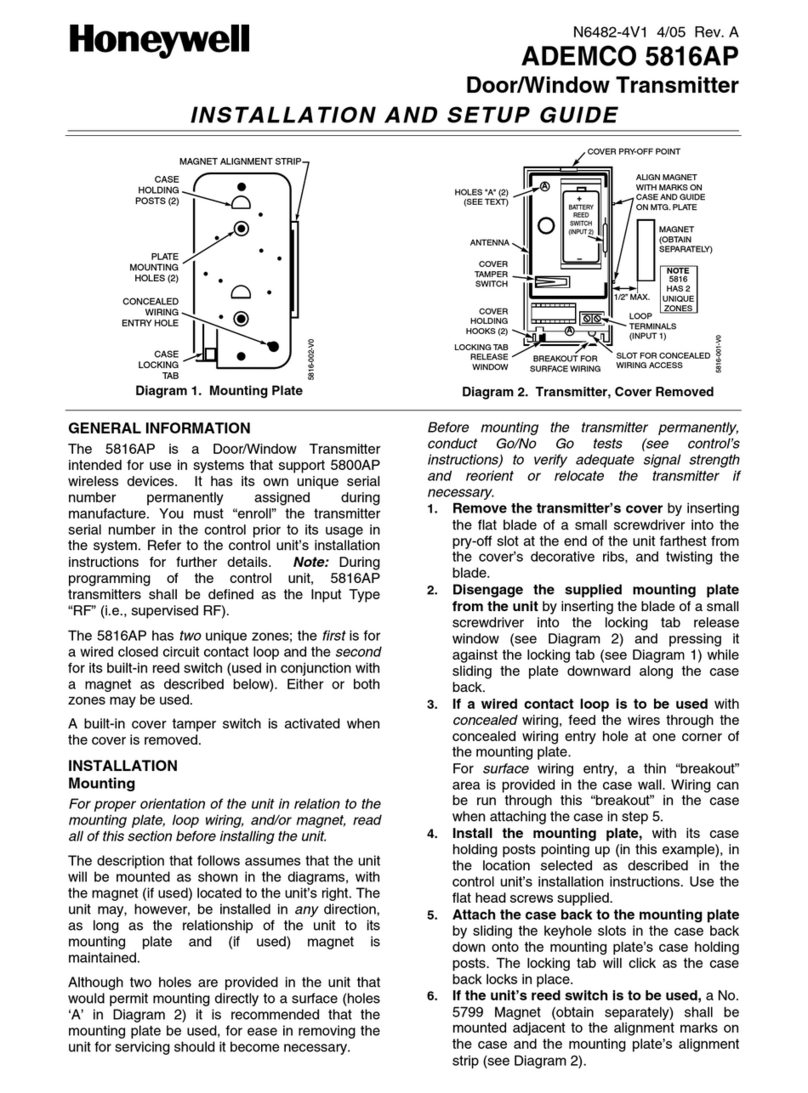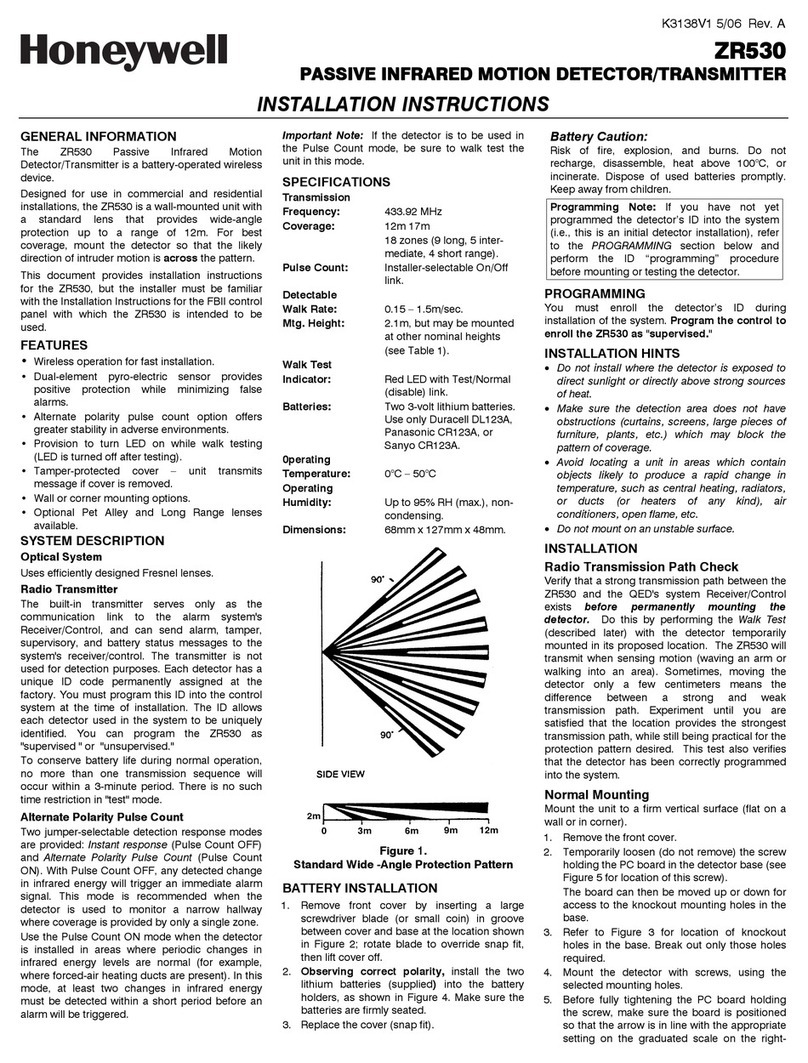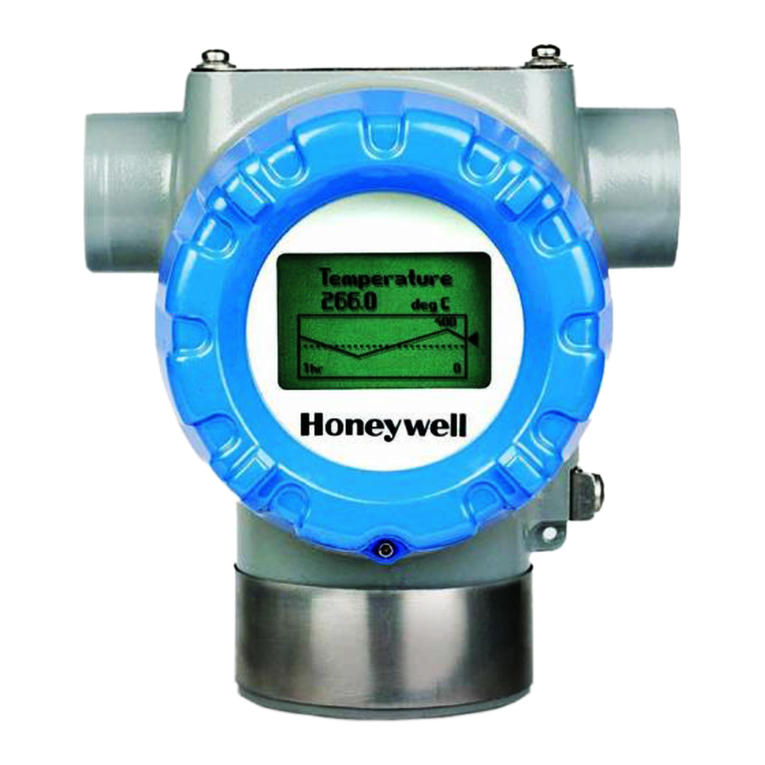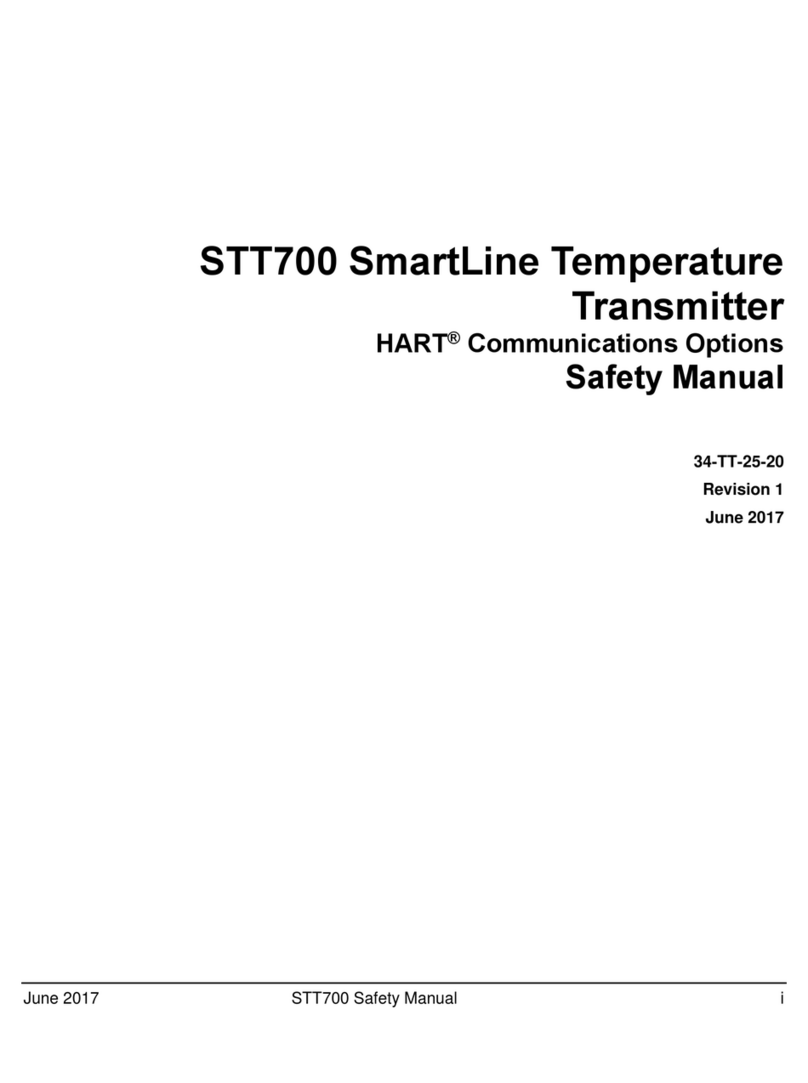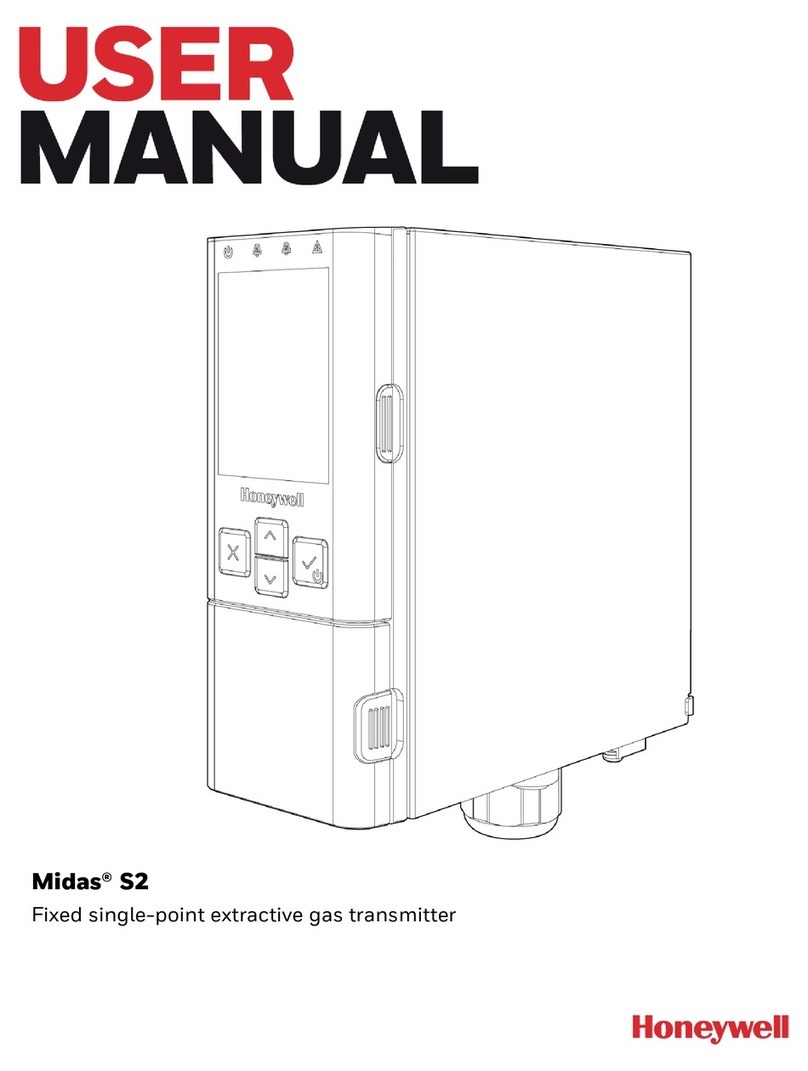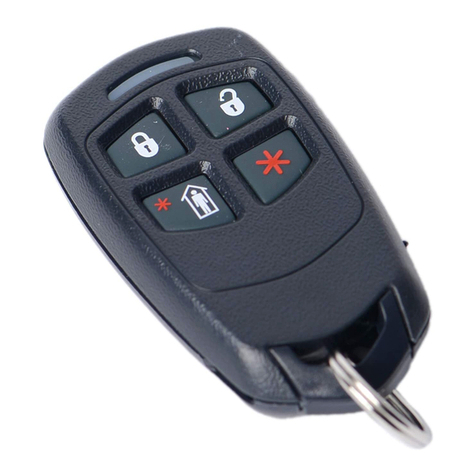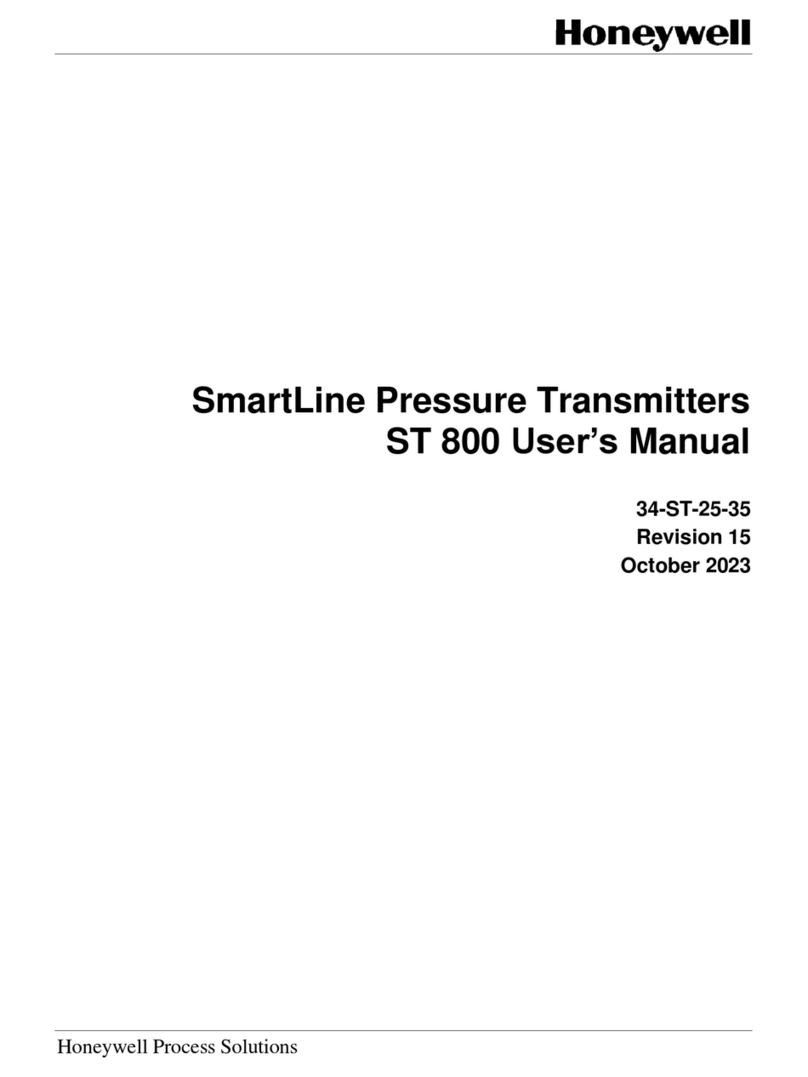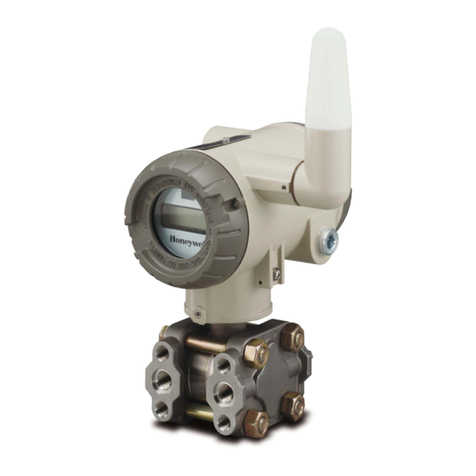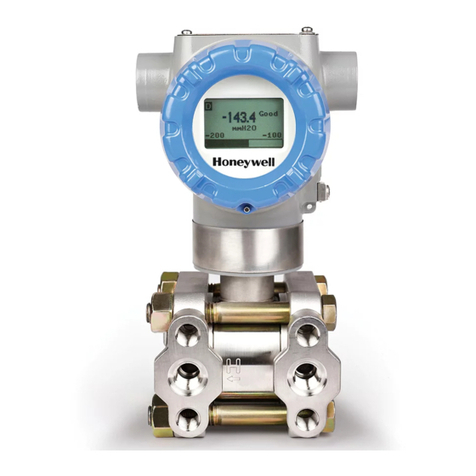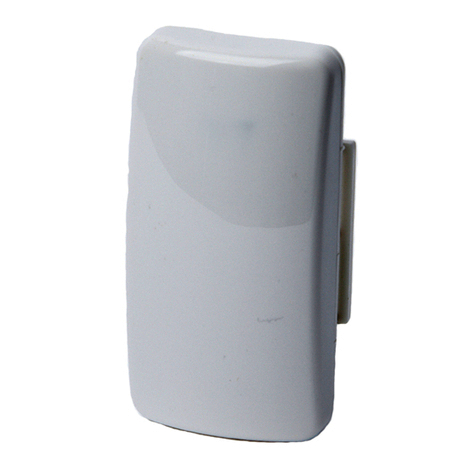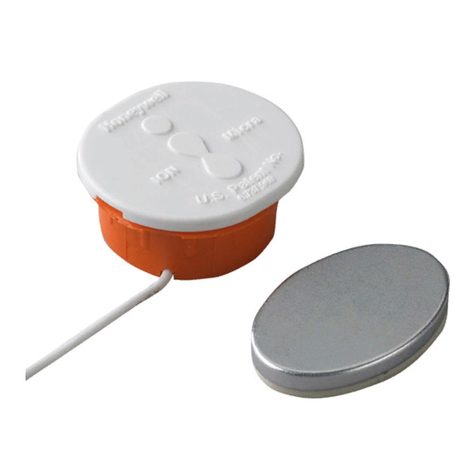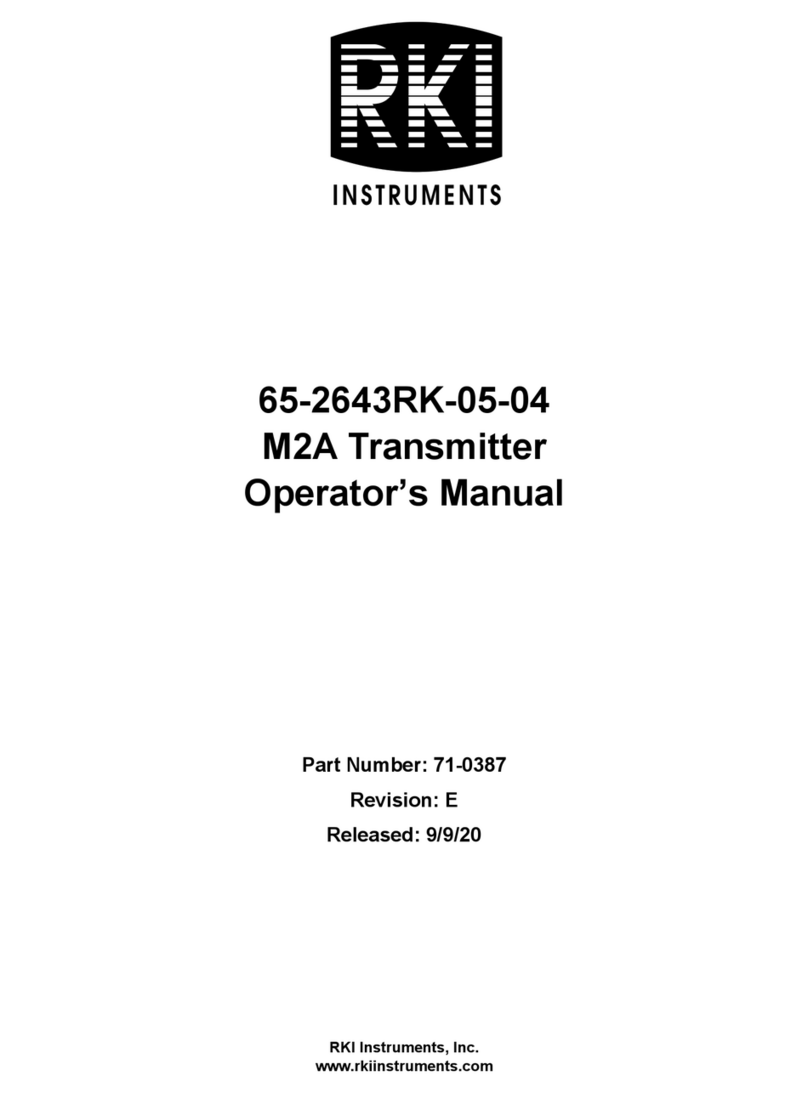
ADEMCO 5817CBXT
Wireless Commercial/Household Transmitter
Installation and Setup Guide
GENERAL INFORMATION
The 5817CBXT is a universal contact-monitoring transmitter that can be
used with household and commercial fire and burglary-initiating devices
such as door/window contacts, motion and glassbreak detectors,
sprinkler water flow switches, tamper switches, post indicator valves,
manual pull stations, and remote duct detectors. The 5817CBXT has
three unique input loops (zones).
Loop 1: Supervised and typically used for high-priority alarm reporting
such as commercial fire or burglary. It requires a 470K ohm
end-of-line resistor (PN EOLR 470K) to be placed across the
sensor. Short circuit reports as loop 1; open circuit reports as
loop 4 (tamper). Response time is approx. 320mS.
Loop 2: Built-in, normally closed reed switch (used in conjunction with
a magnet).
Loop 3: Normally closed household burglary loop. Response time is
approx. 320mS.
Loop 4: Tamper loop (automatically enrolled) contains two tamper
switches. A built-in cover tamper switch is activated when the
cover is removed. A unit tamper switch is activated if the unit
is separated from its mounting plate.
ENROLLING
The 5817CBXT has a built-in serial number that must be enrolled in the
control panel prior to its usage in the alarm system. Assign loops 1-3 to
individual zones respectively. Refer to the control panel's installation
instructions for specific programming procedure.
When programming the 5817CBXT transmitter, set as Input Type "RF"
(i.e., supervised RF) (mandatory for UL installations).
NOTE: DIP switch 1 must be set to OFF during enrollment.
MOUNTING
•Signal strength may vary from location to location. Before mounting
the transmitter permanently, conduct Go/No Go tests (see control's
instructions) to verify adequate signal strength from this location.
•When a satisfactory location is found,remove the battery and
proceed with installation.
IMPORTANT: Do not mount the transmitter on or near metal
objects, as this may affect transmission range. It is also good
practice to avoid locating the transmitter near wiring such as AC,
telephone, HVAC, computer data cables, etc.
1. Remove the tamper switch hold down tab from the mounting plate
and set it aside. It will be needed if not using the mounting plate.
2. Remove the transmitter's cover using the flat blade of a small
screwdriver in the pry-off slot and twisting. To replace the cover,
engage the hooks along the top edge and snap shut.
3. Disengage the mounting plate from the case back by inserting the
blade of a small screwdriver into the mounting plate release hole
(see Figure 3) and pushing the locking tab out (see Figure 1). Slide
the mounting plate downward along the case back.
4. For Concealed Wiring: Feed the wires through the concealed wiring
entry hole at the bottom corner of the mounting plate (and/or case
back).
For Surface Wiring: Remove the knockout slot in the case back
(near loop 3 terminal block).
Do not connect the wiring to the terminal block(s) yet.
5. If Using the Mounting Plate (for easy removal later for servicing):
a. Install the mounting plate in the location determined, with its case-
holding posts pointing up. Use two flat head dry-wall screws.
NOTE: To ensure proper operation of the unit's back tamper, the
screws must be anchored to a wall stud or other solid wood
material.
b. Attach the case back to the mounting plate by sliding the
keyhole slots in the case back down onto the mounting
plate's holding posts. The locking tab clicks as the case
back locks in place.
If Not Using the Mounting Plate:
a. Make note of the location of the tamper switch hold-
in Fig. 1 for the proper placing of the hold-down tab in Fig. 2.
b. Remove the PC board from the case back. Slide a small flat
bladed screwdriver between the case back and PC board near the
board hold-down clip and carefully pry the board out.
c. In the area that was marked, install the hold-down tab with a 5/8”
flat head dry-wall screw. The tab must be aligned with the
corresponding slot in the case back as shown in Figure 2. The tab
as well as the case back must be anchored to a wall stud or other
solid wood material.
d. Mount the case back to the wall using two flat head dry-wall
screws, anchoring it to a wall stud or other solid wood material.
e. Reinstall the PC board into the case back, position the board onto
the two retaining studs on one side of the case back and snap the
board into place. The hold-down tab must mate with the
corresponding cutout in the case back after case back is installed.
5817CB-004-V0
MOUNTING
PLATE
HOLE CASE
HOLDING
POSTS
CONCEALED
WIRING
ENTRY
HOLE
MOUNTING
PLATE HOLE
TAMPER
SWITCH
HOLD
DOWN
LOCKING
TAB
HOLD-DOWN
TAB
Figure 1. Mounting Plate
5817CB-001-V0
TAMPER SWITCH
HOLD-DOWN TAB
CASE
BACK
CONCEALED
WIRING
ENTRY HOLE
MOUNTING
HOLES (2)
INSTALL
IN LINE
WITH
CUT-OUT
IN CASE
BACK
Figure 2. Case Back
6. Set the DIP switch (after the control panel has enrolled the
transmitter loops) for the desired primary loop characteristics, as
described in the Primary Loop Options Table.
Notes:
•The DIP switch may be set by the installer only. It is not a user
function.
•Due to FCC regulation 15.231(a)(4), this switch may not be set to
ON unless loop 1 is used to indicate a type of emergency
involving fire, security, or safety of life.
PRIMARY LOOP OPTIONS
SWITCH
SET TO DIP SWITCH POSITION
ON
REPEATING TRANSMISSION (every 4 sec.)
UPON PRIMARY LOOP 1 FAULT
Use for high priority alarm, such as fire.
OFF
SINGLE TRANSMISSION
PER PRIMARY LOOP CHANGE-OF-STATE
Notes:
•In order for the control panel to enroll the transmitter, DIP
switch 1 must be set to OFF (see Figure 3).
•the Auxiliary loops are not affected by the DIP switch settings.
WIRING CONNECTIONS
Connect the loop wiring to the unit's terminals before installing the
battery (see Figure 3).
NOTES:
•Primary loop 1 is a supervised loop and must have an end-of-line
(EOL) resistor (470K ohms, supplied) placed across the last sensor.
Additionally, for Primary loop 1, a contact device may not be installed
more than 20 feet from the transmitter.
•For UL household burglary and fire installations, the loop 3 contact
device (if used) may not be more than 3 feet from the transmitter.

